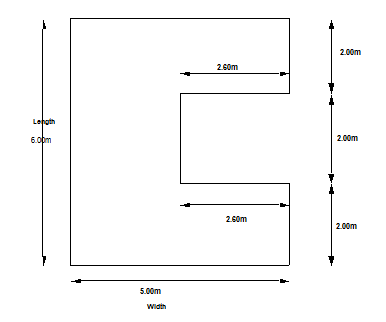Measurement
[edit] Introduction
Note: This article refers to the measurement of quantities for construction works. For articles about more general measurements, see the list of articles in the measurement category.
See also:
[edit] Measurement of quantities for construction works
The measurement of quantities for construction works involves the transformation of drawn information into descriptions and quantities. This process is undertaken to value, cost, and price construction work, as well as enabling effective management of the design and construction process. The measurement process is not restricted to the quantity surveyor producing a bill of quantities for contractors to price during tendering. It is also used in both pre- and post-contract work, helping assess the likely cost of the works, and determining what contractors and subcontractors should be paid for work that has been completed.
[edit] Pre-contract measurement
During the early design stages, the quantity surveyor (or cost consultant) will measure the dimensions of the building to produce budget estimates, perhaps based on benchmarking against similar buildings. As the design develops, they will measure more detailed approximate quantities for cost planning purposes, ensuring that the design can be achieved within the budget. The quantity surveyor then measures the completed working drawings to produce a bill of quantities. Contractors tender for the job by pricing the work described in the bill of quantities.
[edit] Post-contract measurement
The contractor may use measurement for:
- Preparing a construction methodology.
- Ordering goods and materials.
- Procuring subcontract works.
- Calculating the effects of any variations.
- Assessing work done against the construction programme.
- Making payments to subcontractors.
- Preparing or assessing valuations of work completed for interim payments.
The quantity surveyor may undertake measurement for:
- Cost control.
- Estimating the cost of variations to the work.
- Calculating the value of nominated subcontractors’ and suppliers’ work.
- Preparing or assessing interim valuations to pay the contractor for work done.
[edit] Levels of detail required for measured information
The degree of detail to which construction work can be measured varies according to its use and the stage in the project. In the very early design stages, there is not much detail available, so estimates are based on general parameters, such as:
- Functional unit: For example, cost per school pupil, cost per theatre seat, cost per hospital bed, and so on.
- Floor area: Cost per sq.m.
As the design progresses and more information is known, estimates can become more detailed, such as elemental estimates (for walls, floors, roof, frame, etc.).
During the later stages of the design, the work required to construct the building may be measured by:
- Itemised specification: A detailed cost plan which is broken down into a series of elements. Initially, the elemental cost plan will simply be the total construction cost for the project divided into elements on a percentage basis.
- Approximate quantities: A first attempt to measure defined quantities from the drawings (or to take them off from a building information model (BIM)). This should be accompanied by a schedule of assumptions made.
- Bills of quantities: The work is measured in detail, usually in accordance with a standard method of measurement.
NB: Bills of quantities are normally only prepared on larger projects. On smaller projects, or for alteration work the contractor may be expected to measure their own quantities from drawings and schedules of work. Schedules of work are 'without quantities' instructional lists that allow the contractor to identify significant work and materials that will be needed to complete the works and calculate the quantities that will be required.
For more information see: Bills of quantities.
[edit] Standard methods of measurement
It is important that there is a uniform basis for measuring building works for industry-wide consistency and to allow benchmarking, encourage the adoption of best practice and help avoid disputes.
A standard method of measurement:
- Provides a structure for the information that should make up the descriptions.
- Defines the unit of measurement for each item - m, m2, m3, number, tonnes, and so on.
- Provides rules as to what is included within each item.
- Defines the terms used to avoid disputes.
- Allows familiarity to develop, so measurement becomes easier and quicker.
- Provides a clear system for structuring other project information and cross-referencing specification information with bill of quantity information.
The most commonly used standard methods of measurement for building works is the New Rules of Measurement (NRM), which replaced the Standard Method of Measurement (SMM7) in 2012. The New Rules of Measurement are published by the Royal Institute of Chartered Surveyors (RICS) and prepared by the Quantity Surveying and Construction Professional Group.
NRM provides a set of detailed measurement rules for the preparation of bills of quantities or schedules of rates for the purpose of obtaining a tender price. It also deals with the quantification of non-measurable work items, contractor designed works and risks. Guidance is also provided on the content, structure and format of bills of quantities, as well as the benefits and uses of bills of quantities.
For more information see: New Rules of Measurement.
[edit] How measurement is done
[edit] What is taking off?
The term ‘taking off’ refers to the process of identifying elements of construction works that can be measured and priced. Those elements can be measured in number, length, area, volume, weight or time, then collated and structured to produce an unpriced bill of quantities. This process is sometimes referred to as ‘working up’.
For more information see: Taking off.
See also: How to take off construction works.
[edit] What are the standard measurement conventions?
Always measure gross building area and then deduct items such as exterior walls to find floor space area. Always measure on the centre line of the material.
[edit] Calculating girths and centre lines
The centre line is half way between the external girth and the internal girth.
Centre line (CL) = (Internal girth + external girth)/2
CL = Internal girth + (No. of corners) x 2(wall width)/2
or
CL = External girth - (No. of corners) x 2(wall width)/2
[edit] Calculating girths for irregular shaped buildings
| EXTERNAL GIRTH | INTERNAL GIRTH |
| 2.00 | 1.50 |
| 1.00 | 1.00 |
| 1.00 | 1.00 |
| 1.00 | 0.50 |
| 3.00 | 2.50 |
| 2.00 | 1.50 |
| Total = 10.00 | Total = 8.00 |
CL = Internal girth + (No. of corners) x 2(wall width)/2
Number of external corners = 5
Number of internal corners = 1
External corners - Internal corner = 4
This occurs regardless of shape providing the walls encompass 360°.
In the example above, the internal girth was 8.00, and the external girth was 10.00.
Difference = 2.00 m = 4 x 2(wall width)/2
[edit] Buildings with an inset
Girth = 2(length + width) + 2(depth of inset)
= 2(6.00 + 5.00) + 2(2.60)
= 27.20 m
[edit] Important centre lines used for measuring foundations
[edit] Building information modelling (BIM) and measurement.
Increasingly, software packages are available to assist in the preparation of preparation of bills of quantities, and building information modelling systems can be used to produce bills of quantities from information already contained within the model.
For more information see: Building information modelling.
[edit] Related articles on Designing Buildings
- Advantages of a bill of quantities.
- Area.
- BCIS elements.
- Bill of quantities.
- Chainage.
- Code of measuring practice.
- Comparison of SMM7 with NRM2.
- Conversion of material volumes.
- Cost plans.
- Cubic metre.
- Gross external area.
- Gross internal area.
- How to take off construction works.
- International Property Measurement Standards.
- Measurement of existing buildings.
- New Rules of Measurement.
- NRM 1.
- NRM 2.
- NRM 3.
- Quantity surveyor.
- Schedule of work.
- Size.
- Units.
- Volume.
[edit] External references
- ‘Willis’s Elements of Quantity Surveying’ (10th ed.), LEE, S., TRENCH, W., Blackwell Publishing (2005)
Featured articles and news
Moisture, fire safety and emerging trends in living walls
How wet is your wall?
Current policy explained and newly published consultation by the UK and Welsh Governments.
British architecture 1919–39. Book review.
Conservation of listed prefabs in Moseley.
Energy industry calls for urgent reform.
Heritage staff wellbeing at work survey.
A five minute introduction.
50th Golden anniversary ECA Edmundson apprentice award
Showcasing the very best electrotechnical and engineering services for half a century.
Welsh government consults on HRBs and reg changes
Seeking feedback on a new regulatory regime and a broad range of issues.
CIOB Client Guide (2nd edition) March 2025
Free download covering statutory dutyholder roles under the Building Safety Act and much more.
AI and automation in 3D modelling and spatial design
Can almost half of design development tasks be automated?
Minister quizzed, as responsibility transfers to MHCLG and BSR publishes new building control guidance.
UK environmental regulations reform 2025
Amid wider new approaches to ensure regulators and regulation support growth.
The maintenance challenge of tenements.
BSRIA Statutory Compliance Inspection Checklist
BG80/2025 now significantly updated to include requirements related to important changes in legislation.
Shortlist for the 2025 Roofscape Design Awards
Talent and innovation showcase announcement from the trussed rafter industry.





























Comments
To make a comment about this article, click 'Add a comment' above.
Separate your comments from any existing comments by inserting a horizontal line.
Really helpful article, but it would be useful to have more detail about the practicalities of how it is done.
thanks